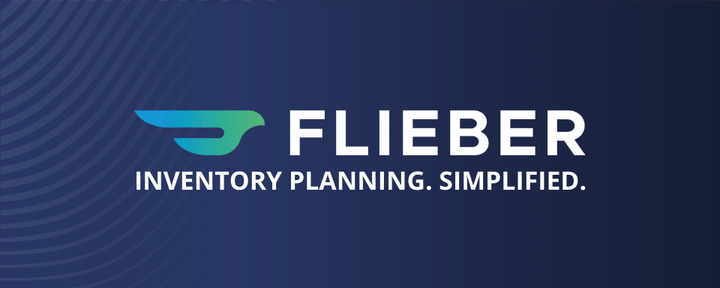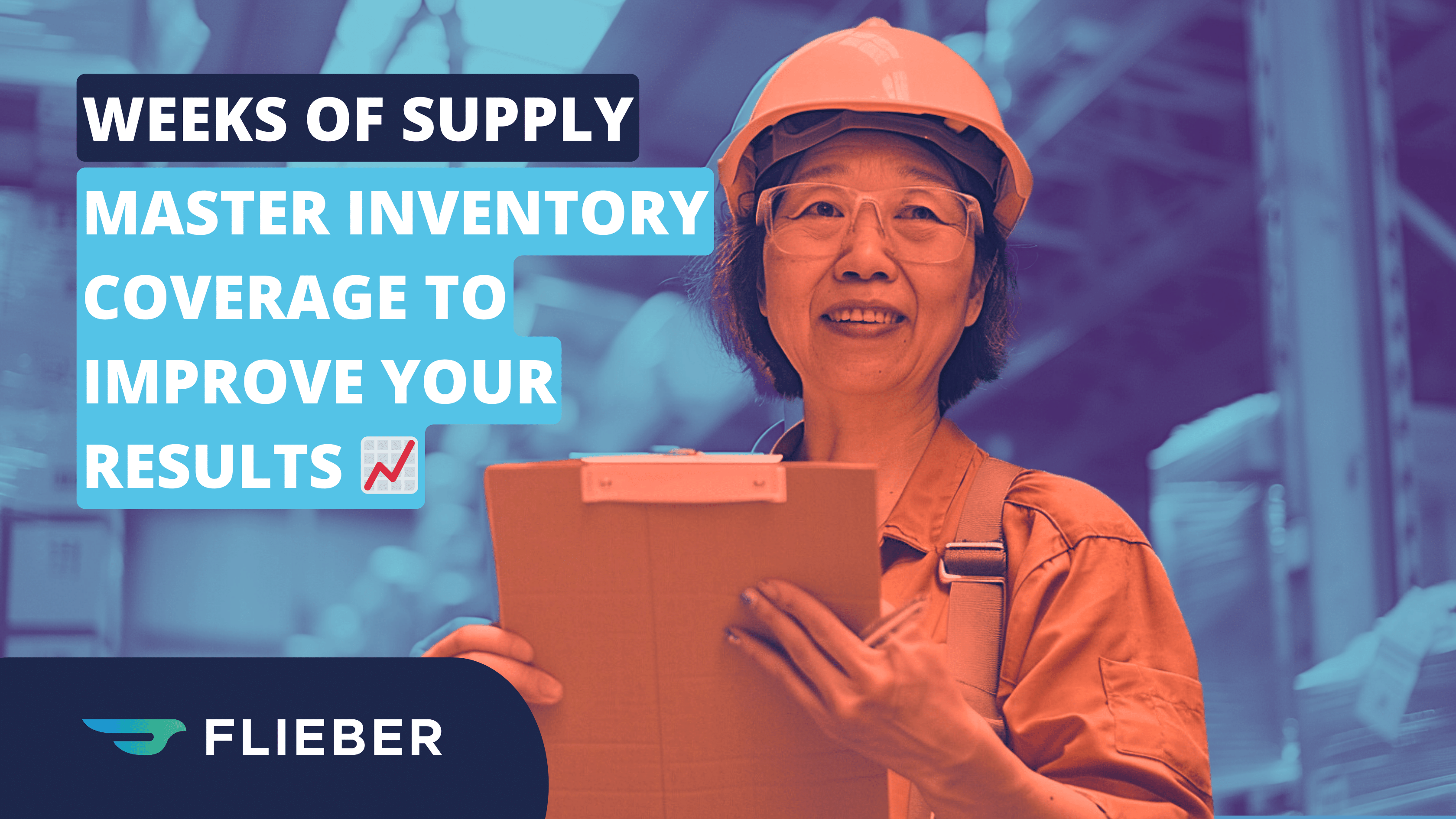As an ecommerce entrepreneur, you’re constantly spinning multiple plates, hoping none of them fall and smash.
These are often mission critical tasks like marketing, sales, and product development—things that directly affect your financial success. So, it may seem like a waste of time to spend your energy on backend tasks like improving your inventory optimization.
Yet this couldn’t be further from the truth.
In the US alone, poor forecasting practices cost retailers $300 billion in revenue due to markdowns. (And that’s not even counting the opportunities you miss out on due to slipped rankings and lost customers.)
But don’t panic. With the right inventory optimization processes, you can recover the capital that’s been stuck in poor-performing purchasing cycles while drastically reducing your risk of stockouts and overstocks. Here’s how to make it happen.
Is your inventory forecasting process costing you sales? Find out how Flieber can get you back on track.
Inventory Forecasting Done Right: What We’ll Cover
- The Truth About Inventory Forecasting
- Fix Poor Inventory Forecasting by Focusing on Optimization
- How to Perfect Your Inventory Forecasting: A Guide to Keeping It Simple and Straightforward
- 7 Non-negotiable Features for Your Ideal Inventory Forecasting Solution
- Quickstarter Tips to Sharpen Your Inventory Forecasting Faster
- Take Control of Inventory Forecasting for Next-Level Success
The Truth About Inventory Forecasting
Many ecommerce businesses tend to view inventory forecasting as a must-have magic number—simply hit that figure and your sales pace and inventory will move in perfect harmony.
If only that were true.
In the real world, online retailers often find themselves confused and disappointed when they continue to miss the mark on inventory and—in some of the worst cases—they begin to accept these expensive misses as simply “part of the game”.
And to be fair, that’s partially accurate.
After all, even the best inventory forecasts are just that—forecasts. They’re predictions that can point you in the right direction, but don’t always take you to the right address.
In an absolute worst case scenario, poor quality inventory forecasts can keep you driving around in circles, while getting absolutely nowhere.
Take this simple example:
Let’s imagine you go out of stock in February. You use the standard 30-day moving average to calculate your stock for March. This average includes the number of units sold over the last month and your projected sales velocity. The accuracy percentage looks good.
But because this average also includes your February stockouts, you’re essentially forecasting to be out of stock again. Sure, you’ve got an “accurate” target number to work with. But you never genuinely fix the root cause of your inventory problems.
The result is a vicious cycle of inventory mismanagement, and the culprit is short-term forecasting.
Short-term forecasting calculations are about as accurate as a coin toss at only 57%. These flawed forecasting methods are the reason you keep having too much or not enough stock and the reason some sellers end up actively marketing winter coats in spring.
And though they’ll give you that “magic number” you’re looking for, they also gloss right over the real trouble lurking beneath.
Ready to do better than 57% forecast accuracy? Find out how Flieber makes it easy.
Fix Poor Inventory Forecasting by Focusing on Optimization
We know too well how it goes. When you start out, you have to focus on affordable tools to manage your store inventory—so, you turn to the classic, cheap, and (not so) cheerful tool: Excel.
Things start out just fine, but as demand grows, parts of your inventory forecasting start to go wrong. Before you know it, inaccurate figures, missing data, and miscalculations leave you guessing where you went wrong.
So, you do what most ecommerce owners do and try to convince yourself that you’re still selling, you’re in stock most days, and you haven’t had any near-fatal disasters yet, so things will be okay. Right?
Wrong. Our research revealed that many forecasting methods (especially manual and Amazon IPI-based systems) have accuracy levels comparable to a coin flip.
As mentioned, we found that companies that opt for a 30-day moving average had accuracy rates averaging at just 57%.
Here are just some of the common repercussions of that level of “accuracy”:
- Deadstock that holds your cash hostage
- Long stockout periods
- Angry customers and negative reviews
- Lost sales and market share
- Irreversible reputational damage
In other words, insufficient inventory forecasting methods force you to gamble your funds and your business’ future.
But for those businesses that go against the grain to adopt a more sophisticated inventory forecasting process, the reward is HUGE.
For example, our latest analysis revealed a massively improved 80.1% accuracy rate for a 60-90 day period, the average time needed to get stock from a supplier and be ready to sell—that’s 40% more accurate than the forecasts your competitors are most likely using.
By optimizing your forecasting methods for not only inventory but also sales, you can demystify even the most complex points in your supply chain and finally say goodbye to stockouts for good.
Not only that, you can also automate the most repetitive parts of the supply chain process and make everything from connecting with suppliers to booking ships and transport way more efficient.
Because in the new era of ecommerce, short-term reactive inventory management will be a thing of the past. The future is about getting ahead of your inventory challenges through inventory optimization.
How to Perfect Your Inventory Forecasting: A Guide to Keeping It Simple and Straightforward
Assess the damage caused by past inventory forecasting practices
To take back control of your stock, sales and margins, you need to understand what went wrong in your inventory management track record so far. That’s right. It’s time to rip off the band-aid and take a good look at the extent of your injuries from past inventory forecasting mistakes.
To clarify which areas need improvement, investigate: 🔎
- Where you’re hemorrhaging money in your supply chain
- Where your working capital is stuck (e.g., in unsold seasonal items)
- Any points where you lack supply chain visibility (e.g., no supplier updates are recorded)
- Which products often go out of stock
- Seasons and times you experience stockouts
Keep in mind, it doesn’t have to all be doom and gloom. Be sure to take note of the things in your stock management you’re doing well too, then look for ways to improve even further so you can do more of what’s working.
Throw your old supply chain management system away (and don’t look back )
Even if it’s not great, you’ve put a lot of effort into your existing process, and it can be intimidating to turn your back on your work (you can blame that on the sunken cost fallacy).
In case you’re still on the fence about saying goodbye to your current inventory optimization practices, let’s explore why you can’t afford to rely on lackluster tools and processes:
- The wrong assumptions set you up to fail from the get-go
Despite inventory forecasting being highly inaccurate on average, many start with (and stick with) Excel or amateur tools. If you find yourself in this position, incorrect data will guide every sales and inventory decision. Not cool.
Remember, these tools only consider a store’s recent sales pace to define what will sell in the future. Basic tools calculate this data as one constant number, known as sales velocity. Yet, nothing about retail selling is continuous—even non-seasonal products have varying sales velocities throughout the year.
So, why do stores accept such poor odds of success?
Because the thought of collecting data in real-time from multiple sources, considering numerous variables, and using these far-reaching data points to project future sales and inventory simply feels impossible.
Even if you had your own in-house developer, you’d still need to dedicate hours of time, energy and of course plenty of money to assemble that many moving parts.
- Cut corners come back to bite you
When you use the barebones method we just covered, it’s often to save time, money and effort in the short-term—but these shortcuts can leave you paying an even higher price.
For starters, you’ll lack the 360-degree view of your supply chain (both past and present) that you need to make informed and accurate decisions, meaning inventory forecasting mistakes will continue to plague your store in the long-term and snatch these savings right back.
This problem boils down to three things:
- Your decisions are based on wrong assumptions from the start due to incomplete sales pace and inventory forecasting.
- These wrong assumptions negatively impact other inventory and sales decisions down the line.
- Decisions become increasingly off target as time progresses, putting your profitability and margins on the line.
Think of it like this, if you’re building a road and make a 1-degree mistake on the first curve, it looks fine in the beginning. But two miles down, your road will end up in a completely different location.
This compounding effect on inventory and sales decisions runs rampant in stores today. It’s what generates more than $1.75 trillion in losses due to stockouts and overstocks in global retail, including over $300 billion in online retail alone.
Invest in a comprehensive supply chain management solution
When you onboard a modern, full-stack inventory forecasting solution, it drastically reduces any issues you encounter later on.
But like all investments, it’s tough to pull the trigger if you only look at what it costs you. This changes when you consider the game-changing power of these platforms.
When you make the switch to an advanced inventory optimization solution, you can look forward to benefits like:
- More liquidity in your business: Waving goodbye to costly overstock or stockouts, means you’ll be able to service all the orders that come in, giving you more cash to work with.
- Increased profits: No more rushed restock orders or damage control campaigns that chip away at your profits.
- Stellar reputation: When you give customers what they want, when they want it, you provide an excellent customer experience that keeps them coming back.
- Business growth: You can reinvest the money you earn into sales levers like products and territories to expand your brand.
- Reclaim your time: No more wasting precious time on admin to manually fix stockout issues. You’re free to use it on income-producing tasks instead.
But more importantly, an excellent inventory optimization platform will help you forecast inventory with missile-like precision. This is vital as inventory issues like stockouts and overstocks impact your business’s aspects, from finances to customers.
For a forecast to be accurate, it’s vital to consider variables like:
- Recent trends
- Sales velocity
- Seasonality
- Cyclicality
- Advertising variation
- Ranking influence
- Price variation
If your forecast takes these variables (among others) into account, you can secure precision levels.
For example,some professional forecasts can achieve a 95%+ accuracy rate for short-term decisions (up to 30 days) and an 85%+ accuracy for longer-term decisions (3 months ahead).
Now compare these figures to when you only use recent sales trends to guide your inventory forecasting. While you may have similar short-term accuracy at 90%+, the accuracy rate for long-term inventory projections drops to 46%. Yikes!
This means more than 50% of your inventory orders will be wrong if you opt for the average Joe solution. Just imagine how much this will cost your brand over a year or even a decade.
Just like that pesky curving road, in the short-term these decisions are invisible, but their compounding impact on the long-term generates enormous deviations.
Cutting corners in your inventory forecasting will cost you big time. So, be bold and invest in your company’s future. You won’t regret it.
7 Non-negotiable Features for Your Ideal Inventory Forecasting Solution
When it comes to choosing an inventory optimization system, it’s important to remember that not all platforms are made equal. Don’t be swayed by flashy websites and marketing campaigns, instead go deeper to assess whether a solution can truly revolutionize the way you manage your supply.
Your inventory forecasting solution should help you:
- Collect and analyze data in real-time based on sales and multiple other variables (see examples above)
- Forecast based on past and current trends
- Set up stock reordering thresholds
- Automate stock orders from manufacturers
- Avoid stockouts with live updates and stock level alerts
- Locate cost-effective shipping times and stock bundles
- Sync supplier updates
These are critical tasks to help you make precise decisions about your stock, guided by sales pace and deep inventory requirements. Don’t skip this step.
Quickstarter Tips to Sharpen Your Inventory Forecasting Faster
No matter how great a tool you choose, your success will always depend on how well you wield it. Luckily, there are a few easy steps that can help make your systems revamp totally worth it.
Make inventory forecasting a company-wide interest
It’s easy to fall into the trap of viewing forecasts in a vacuum, but this is counter-productive as different departments’ actions can affect your stock levels.
For example, if the marketing team runs a successful campaign, people may purchase more than usual. So, get all the team’s views and use them as part of your forecasting, and make a note of potential threats to sales that could cause overstocks or outstocks.
Keep a watchful eye on your competitors and niche
You can be a top-seller in your niche, then overnight a competitor swoops in with a lower price to steal some of your market share. On the flip side, a larger competitor’s business could collapse suddenly, making your business the next best option and causing a sharp rise in orders. Keep a keen eye on your competitors and industry news to ensure you don’t get caught out.
Ensure your data is (and remains) clean
Your inventory forecasting system can only work with the information you give it, so it’s crucial to feed it with the cleanest data possible. Weed out outliers that can impact your forecasts, like an unexpected warehouse closure that left you unable to ship certain goods for a few days. Ensure data from relevant sources sync into your solution, like production status, supplier updates, and shipping notifications. This approach will aid the solution’s decision accuracy.
Take Control of Inventory Forecasting for Next-Level Success
If they’re left unchecked, inventory issues can cause significant damage to your business.
A great way to control your inventory is to enlist the help of truly advanced inventory optimization—but it’s not a quick fix. Aside from needing to enlist the help of a tool that generates accurate long term forecasts, you need to change your views on the role of forecasts in your business and start seeing them as the true revenue levers they are.
Time is money in this business, so the sooner you get on the road to great inventory forecasting, the quicker you can recover your losses, stop leaving profitable opportunities on the table, and start actively gunning for the next level.
When you’re ready, Flieber can help.
Our advanced algorithms reach far beyond basic prediction models to achieve an average accuracy rate of over 80%, regardless of whether you’re looking at short-term decisions (up to 30 days) or longer-term decisions (3 months ahead) to help you break-free of stockouts and overstocks for good.
Written by Fabricio Miranda, CEO & Co-Founder at Flieber







